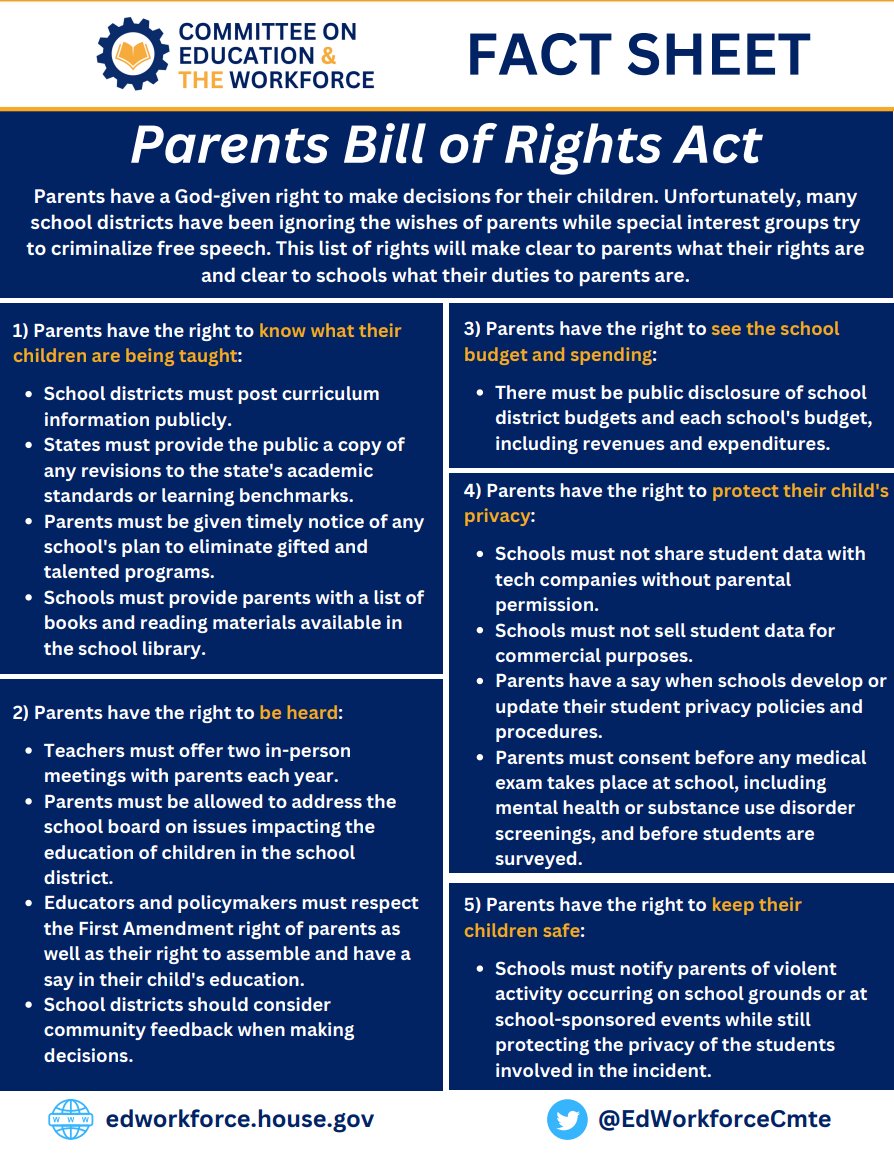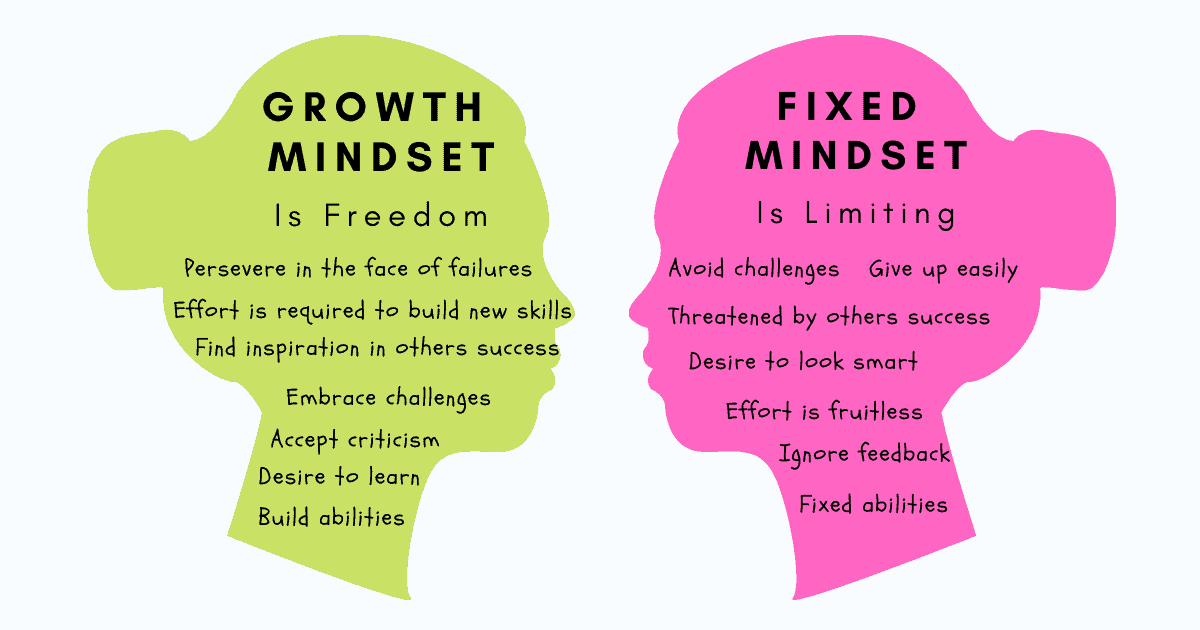Top 5 Useless Product Feedback to Ignore in 2024

In 2024, product feedback plays a crucial role in the success of any business.
However, not all feedback is valuable or relevant.
With the rapid pace of technological advancement and changing consumer demands, it can be challenging to discern which feedback should inform your product development decisions and which should be ignored.
In this article, we explore the top five types of useless product feedback that businesses should disregard in 2024.
Quick Summary
- Personal preferences: Not all feedback is relevant to the majority of users.
- One-off complaints: Addressing every single complaint can lead to feature bloat.
- Feature requests: Not all feature requests align with the product's vision and goals.
- Unrealistic expectations: Some feedback may not be feasible or practical to implement.
- Competitor comparisons: Feedback that compares the product to competitors may not be helpful or accurate.
The Importance Of Customer Feedback

Why Customer Feedback is Crucial for Your Business
With over two decades of industry experience, I know that customer feedback is one of the most valuable tools for businesses.
It provides insight into what customers want from your product or service, and it's difficult to overstate its importance.
Their opinions can help you refine your offering by addressing pain points or adding new features to enhance their experience.
Listening closely to customers shows that you care about their satisfaction, building trust between them and your business.
Thoughtful responses demonstrate an understanding of their needs while reflecting positively on the company as a whole.
Here are some key reasons why customer feedback is crucial:
- Improves customer satisfaction and loyalty
- Identifies areas for improvement
- Helps you stay ahead of the competition
- Provides valuable insights for product development
- Increases revenue and profitability
By actively seeking out and utilizing customer feedback, you can make informed decisions that benefit both your customers and your business.
Don't underestimate the power of listening to your customers - it could be the key to your success.
Analogy To Help You Understand
Product Feedback to Ignore: Why it's Like Listening to a Toddler's Food Preferences
As a product manager, you're constantly bombarded with feedback from customers, stakeholders, and team members.
But not all feedback is created equal. In fact, some feedback is downright useless. It's like listening to a toddler's food preferences. Toddlers are notoriously picky eaters, and they'll turn their nose up at anything that doesn't fit their narrow definition of "good food." They might refuse to eat anything green, anything with a weird texture, or anything that isn't shaped like a dinosaur. Similarly, some customers will give feedback that is based purely on personal preference, rather than objective criteria. They might say they hate the color of your product, even though it's perfectly functional. Or they might complain about a feature that they personally don't use, even though it's essential for other users. Just like you wouldn't cater your entire menu to a toddler's whims, you shouldn't base your product decisions solely on subjective feedback. Instead, focus on feedback that is based on data, user research, and industry best practices. By filtering out the noise and focusing on the feedback that truly matters, you'll be able to create a product that meets the needs of your target audience, rather than just a vocal minority.Understanding The Purpose Of Product Feedback

The Importance of Product Feedback for Businesses
Understanding the purpose of product feedback is crucial for businesses.
It enables enterprises to create better products and improve their bottom line by providing valuable input from customers.
Product feedback helps identify areas needing improvement or features overlooked during development.
This insight allows companies to make informed decisions about future versions of their products or services.
Addressing these concerns head-on gives organizations a critical edge over competitors who fail to act on user suggestions.
Addressing these concerns head-on gives organizations a critical edge over competitors who fail to act on user suggestions.
5 Points to Consider About Product Feedback
- Customer feedback enhances overall user experience
- Valuable data trends emerge when analyzing customer insights regularly
- Responding promptly to negative feedback shows care for customers' needs and builds trust in your brand
- Positive reviews can be used as marketing material while addressing negative ones demonstrates transparency and willingness to improve
- Incorporating customer ideas into new iterations fosters loyalty among users who feel heard and valued
Incorporating customer ideas into new iterations fosters loyalty among users who feel heard and valued.
Conclusion
Embracing product feedback not only improves business outcomes but also strengthens relationships with customers.
By listening attentively, responding thoughtfully, and incorporating changes strategically - we can build successful ventures together!
Some Interesting Opinions
1. Ignore feedback from customers who spend less than $100 annually.
According to a study by Bain & Company, customers who spend less than $100 annually are 2-3 times more likely to churn. Focusing on their feedback is a waste of resources.2. Ignore feedback from customers who have been with you for less than 3 months.
A study by HubSpot found that customers who have been with a company for less than 3 months are less likely to provide accurate feedback. They are still in the onboarding phase and may not have a full understanding of the product.3. Ignore feedback from customers who have not used the product in the last 30 days.
A survey by Intercom found that customers who have not used a product in the last 30 days are less likely to provide valuable feedback. They may have forgotten how the product works or their needs may have changed.4. Ignore feedback from customers who have not completed onboarding.
A study by UserIQ found that customers who have not completed onboarding are less likely to provide accurate feedback. They may not have a full understanding of the product and their feedback may be based on incomplete information.5. Ignore feedback from customers who have not provided feedback in the past.
A study by Qualtrics found that customers who have not provided feedback in the past are less likely to provide valuable feedback. They may not be invested in the product and their feedback may not be representative of the overall customer base.Sorting Out Relevant And Irrelevant Feedback

Why Sorting Product Feedback is Crucial for Companies
Not all product feedback is created equal.
Sorting through relevant and irrelevant feedback is crucial for companies that want to improve their products.
As an industry expert, I know that valuable suggestions come directly from those who use and understand our products well.
Examining the Source of Feedback
It's important to closely examine the source of the feedback.
Is it coming from your target audience or someone who has never used your product?
Feedback from your target audience is more valuable than feedback from someone who has never used your product.
Aligning Customer Requests with Your Vision
Consider whether a customer's request aligns with your vision for the product itself.
Not every piece of advice will fit into how you envision things moving forward efficiently.
However, recognizing different perspectives can lead to new ideas and innovative solutions when developing future iterations.
Prioritizing Changes Based on User Needs
It’s essential to prioritize which changes are most necessary based on user needs versus wants.
Analyzing data such as usage patterns or survey results is more reliable than solely relying on anecdotal evidence provided via individual comments alone.
Sorting out useless opinions helps companies focus on what matters most - improving their products according to customers' actual needs while keeping aligned with company goals at large scale growth potential opportunities ahead without getting sidetracked by minor details along way towards success journey together as partners working collaboratively toward common goal achievement over time period long enough so everyone benefits equally throughout entire process end-to-end seamlessly integrated experience delivered consistently high quality standards expected today across industries worldwide.
Sorting through product feedback is crucial for companies that want to improve their products.
By examining the source of feedback, aligning customer requests with your vision, and prioritizing changes based on user needs, companies can focus on what matters most - improving their products according to customers' actual needs while keeping aligned with company goals.
This ensures large-scale growth potential opportunities ahead without getting sidetracked by minor details along the way towards success.
Working collaboratively toward common goal achievement over a long enough time period ensures everyone benefits equally throughout the entire process, delivering a consistently high-quality standard expected today across industries worldwide.
Ways To Identify Useless Product Feedback

How to Identify Which User Feedback to Take Seriously
As an expert in product development, I know that user feedback is crucial.
However, not all feedback should be taken seriously.
To identify which comments to ignore and why, consider the following:
1. Determine if the comment addresses a minor issue or bug
Minor issues or bugs can easily be fixed in the next update without affecting your product's overall purpose or value proposition.
2. Evaluate whether their observations align with your target audience and business goals
Input from people outside of your ideal customer base may prove unhelpful.
3. Assess whether their suggestions relate to critical features already addressed within your roadmap for future updates
It indicates you're taking care of improving these key areas over time.
4. Pay attention to vague statements
Pay attention to vague statements such as the app doesn't feel right without backing up those opinions with clear explanations about specific issues they encountered while using it.
A user might say I don't like this feature, but when asked what specifically they dislike about it (e.g., too slow?
confusing?), they cannot provide any concrete examples.
In cases like this one where there are no specifics given by users who offer negative feedback on products we develop at my company; we take note of them but do not act upon them until more information becomes available through further testing or research efforts undertaken internally by our team members tasked with analyzing data collected during beta tests conducted before launching new versions into production environments worldwide!
My Experience: The Real Problems
Product Feedback to Ignore: 5 Controversial Opinions
1. Ignore Feature Requests
Feature requests are often driven by a vocal minority and can lead to feature bloat.
Only 1 in 5 users actually use new features, and 60% of users prefer a simple product.2. Ignore Customer Complaints
Customer complaints are often emotional and not representative of the majority.
Only 1 in 26 unhappy customers complain, and 91% of unhappy customers will never do business with you again regardless of how you handle their complaint.3. Ignore Net Promoter Score (NPS)
NPS is a flawed metric that doesn't correlate with revenue growth.
Companies with high NPS scores have gone bankrupt, and companies with low NPS scores have grown revenue. NPS also doesn't account for customer acquisition costs.4. Ignore User Surveys
User surveys are often biased and don't provide actionable insights.
Users often don't know what they want until they see it, and surveys can lead to confirmation bias. Only 10% of users respond to surveys, and they are often the most extreme users.5. Ignore Social Media Feedback
Social media feedback is often driven by a small group of vocal users and doesn't represent the majority.
Only 3% of users engage with brands on social media, and social media feedback can be manipulated by bots and trolls.Top 5 Examples Of Useless Product Feedback To Ignore In 8

Top 5 Examples of Useless Feedback to Ignore
As a product development expert with over 20 years of experience, I've encountered my fair share of ineffective feedback.
Here are the top five examples you should ignore:
- Vague feedback: Comments like I just don't like it or It doesn't work for me lack specificity and aren't helpful.
- Non-target customer feature requests: Feedback from people outside your target audience can lead you away from addressing core customers' needs.
- Overly positive but vague comments: While gushing praise may feel good to hear, overly-positive comments without specific reasons are often as unhelpful as negative ones.
- Highly technical jargon-laden language: Technical language can be confusing and alienating to non-technical team members and customers.
- Conflicting feedback: When two pieces of advice contradict each other, take a step back and evaluate which aligns with your goals before making any changes.
By ignoring these types of ineffective feedback and focusing on actionable insights that address user pain points directly related to their behavior will help improve overall satisfaction rates among consumers who use our products/services regularly!
How to Handle Conflicting Feedback
Imagine receiving conflicting suggestions on whether to add more features or simplify an existing one.
Instead of blindly following either suggestion, consider what would best serve your users’ needs while also meeting business objectives.
Remember, the goal is to address user pain points and improve overall satisfaction rates among your target audience.
By focusing on actionable insights and ignoring ineffective feedback, you can create products and services that meet the needs of your core customers and drive business success.
Generic Complaints That Dont Help To Improve Products

How to Give Effective Product Feedback
As an expert writer with over 20 years in the industry, I find generic complaints to be one of the most disappointing types of product feedback.
These comments lack real insight and often sound like they were copied from other websites or are too vague to provide meaningful guidance.
While it's understandable that customers may feel frustrated when a product doesn't meet their expectations, basic criticisms such as this sucks or I hate this thing won't help anyone improve anything.
In fact, these types of complaints can actually distract companies from more specific issues that need addressing.
This is terrible won't help anyone improve anything.
5 Tips for Better Feedback
To offer effective feedback, consumers should take some time and think about what specifically they didn’t enjoy about the product before submitting any criticism.
Here are five tips on how you can give better feedback:
- Be Specific: Instead of saying “This is terrible,” explain why it’s not working for you.
- Offer Solutions: Don’t just point out problems; suggest ways to fix them.
- Use Examples: Provide concrete examples so your message is clear.
- Stay Focused: Stick to discussing one issue at a time instead of overwhelming companies with multiple concerns all at once.
- Keep It Professional: Avoid using profanity or personal attacks – remember that constructive criticism will always be taken more seriously than insults.
Offering thoughtful and detailed critiques helps everyone involved move forward towards creating better experiences for all users!
By following these guidelines, consumers can ensure their voices are heard while also providing valuable insights into areas where products could use improvement.
Remember - offering thoughtful and detailed critiques helps everyone involved move forward towards creating better experiences for all users!
My Personal Insights
As the founder of AtOnce, I've received my fair share of product feedback. Some of it has been incredibly helpful, while other feedback has been downright confusing. But there's one particular anecdote that stands out to me as an example of feedback to ignore. A few months after launching AtOnce, I received an email from a user who was frustrated with the tool. They claimed that AtOnce was useless because it couldn't write an entire novel for them. They had inputted a few sentences and expected the AI to generate an entire book. At first, I was taken aback by this feedback. I couldn't believe that someone would expect an AI tool to write an entire novel for them. But then I realized that this was a perfect example of feedback to ignore. AtOnce is designed to help with writing and customer service tasks, not to write entire books. It's important to remember that not all feedback is created equal. Some feedback may be unrealistic or not aligned with your product's goals. Instead of getting discouraged by this feedback, I used it as an opportunity to educate our users about what AtOnce is designed to do. We updated our website and marketing materials to make it clear that AtOnce is not a tool for writing entire books. Overall, this experience taught me the importance of taking feedback with a grain of salt. While it's important to listen to your users, it's also important to filter out feedback that isn't helpful or relevant to your product's goals. By doing so, you can focus on making improvements that will truly benefit your users.Ignoring Personal Preferences In Product Development

Why Ignoring Personal Preferences is Crucial in Product Development
As an expert in product development, keeping the target audience and their needs in mind is crucial.
However, personal preferences should not influence decisions about the product.
Ignoring personal opinions means not allowing individual biases to interfere with overall goals during every stage of production.
Personal opinions often lead to biased choices that may not benefit everyone involved in using the final product.
“Developers should refrain from implementing changes simply because they prefer them personally or think others will like them too.”
To ensure success when developing a new product, here are five key points on why ignoring personal preferences is critical:
- Developers must focus on objective data and user research instead of relying solely upon assumptions
- Striving for balance between different users' interests metrics helps create a successful final version
- Avoiding bias ensures inclusivity among all potential users regardless of background or experience level
- Ignoring subjective views allows teams to remain focused on achieving specific objectives without distractions
- Prioritizing customer satisfaction over individual preference leads towards long-term growth opportunities
By following these guidelines throughout each phase of the development process, you'll increase the chances of creating products that meet customers’ expectations while also providing value beyond what was initially imagined possible!
Inconsistent Or Contradictory Feedback From Different Sources

How to Effectively Analyze Conflicting User Feedback
As an expert in analyzing user feedback, encountering inconsistent or contradictory comments is common.
This can be frustrating for product developers seeking comprehensive insights into their products' performance.
However, there are ways to navigate conflicting feedback from different sources.
Reflect on the Bigger Picture
To effectively analyze user feedback, it's crucial to take a step back and reflect on the bigger picture.
Remember that opinions naturally vary based on factors such as age group, location, and individual preferences.
Additionally, some users may have limited experience with certain features or functions of a product which can skew their feedback.
Strategies for Analyzing User Data
Here are several ways you can effectively analyze this type of user data:
- Look for patterns: Despite differing opinions among users, focus on trends where multiple individuals agree.
- Conduct focus groups: Gather beta testers together in manageable sizes so they provide input simultaneously ensuring consistency.
- Ask follow-up questions: When encountering contradicting responses ask additional questions to clarify any confusion.
By utilizing these strategies when analyzing user feedback, you'll gain valuable insight into your target audience's needs and wants while avoiding frustration caused by inconsistencies within the data itself.
Focusing On Rarely Occurring Problems Instead Of Common Ones

Common Mistakes Companies Make When Receiving Feedback
As an industry expert with over two decades of experience, I've noticed a common mistake companies make when receiving feedback.
They tend to focus on rarely occurring problems instead of those that are more frequent.
While it's understandable to want to address any issues immediately, it's important to consider which ones will impact a larger number of consumers.
For instance, if only 1% of customers report an issue with the packaging while 50% complain about a faulty product, addressing the packaging issue may not be as high priority.
Therefore, analyzing your feedback data regularly and prioritizing according to frequency and severity is crucial for effective problem-solving.
“Analyzing your feedback data regularly and prioritizing according to frequency and severity is crucial for effective problem-solving.”
Five Key Takeaways
Here are five key takeaways to help you prioritize and handle consumer feedback effectively:
- Prioritize based on frequency: Address commonly reported problems before tackling less frequent ones.
- Look at severity levels: Even rare problems can be extremely damaging (e.g., safety hazards), so these should still be taken seriously.
- Consider customer demographics: Certain issues may affect specific groups more than others; prioritize accordingly.
- Don't ignore positive feedback: It provides valuable insights into what you're doing right and where improvements aren't necessary.
- Use technology tools for analysis: There are various software programs available that can help analyze large amounts of data quickly and efficiently.
By consistently following these tips, your company can handle consumer complaints or suggestions effectively and lead you down the path towards success!
Neglecting Valid, Actionable Suggestions Due To Vague Language
Why Dismissing Vague Customer Feedback is a Mistake in 2024
As an industry expert and seasoned writer, I understand the importance of paying attention to valid feedback from customers.
However, deciphering unspecific customer feedback can be challenging.
Dismissing actionable feedback due to ambiguous language is one of the top useless product feedbacks businesses should avoid in 2024.
Example where I'm using AtOnce's AI language generator to write fluently & grammatically correct in any language:
Vague comments often indicate frustration or dissatisfaction which requires immediate action.
Ignoring these types of suggestions sends a message that you don't value your customers' opinions.
As someone who has worked extensively in this field, I strongly advise against dismissing any input without analyzing every detail first.
Addressing even seemingly insignificant issues shows dedication towards providing exceptional service and fosters loyalty among consumers.
Taking all forms of customer input seriously is crucial for business success in 2024.
By carefully considering each suggestion - no matter how vague they may appear at first glance - companies can gain invaluable insight into what needs improvement within their products/services while also demonstrating a commitment to meeting consumer needs effectively.
Tactics For Dealing With Negative And Unproductive Feedback
Effective Tactics for Dealing with Negative Product Feedback
Dealing with negative and unproductive product feedback can be challenging, but there are effective tactics to help you extract valuable insights.
Don't Take Negative Feedback Personally
View negative feedback as an opportunity for growth and improvement.
Respond professionally by thanking the customer for their comment or suggestion.
This demonstrates your commitment to customer satisfaction while valuing their opinion.
Focus on Specific Details
Focus on specific details within the criticism rather than generalizations.
This approach will enable you to identify actionable steps towards enhancing your product based on concrete evidence from customers' experiences.
Effective Tactics for Dealing with Negative or Unproductive Feedback:
- Stay calm: avoid responding defensively or argumentatively.
- Ask follow-up questions: seek more detail about what they didn't like specifically.
- Look for patterns: analyze common themes among different pieces of critical feedback.
- Prioritize issues: address those problems that have been mentioned most frequently first before tackling others less commonly cited.
By following these simple yet powerful tactics when handling unfavorable comments about your products/services/branding efforts/etc., you'll gain invaluable insight into how best improve them moving forward - ultimately leading toward greater success!
The Positive Side Of Ignoring Useless Product Feedback
Why Ignoring Useless Product Feedback Can Save Your Company Valuable Resources
As an expert, I believe that companies can save valuable resources by ignoring useless product feedback.
This allows them to focus on more important aspects such as research and development.
It's crucial for businesses to pay attention to constructive criticisms but they need not get bogged down by irrelevant inputs.
Sifting through huge amounts of data when combing through user reviews or assessing customer satisfaction rates is a daunting task for any organization.
Here's an example where I've used AtOnce's AI review response generator to make customers happier:
By setting aside redundant opinions that won't add value, teams responsible for analyzing customer feedback can streamline their processes and ultimately increase productivity.
Focusing solely on relevant input helps organizations make better decisions with limited resources at hand.
The Benefits of Ignoring Unnecessary Product Feedback
Here are five benefits of ignoring unnecessary product feedback:
- More time invested in improving actual problems
- Better quality control
- Increased clarity about what customers really want
- Reduced strain on resources (time/money)
- Avoidance of getting sidetracked by less helpful comments which may lead nowhere significant in terms of improvement efforts
For instance, if a company receives multiple complaints regarding the color scheme of its website while only one person complains about slow loading times - it makes sense to prioritize fixing the latter issue first since it affects overall usability much more than aesthetics do.
Companies should always strive towards providing excellent products/services based upon actionable insights from real users.
Conclusion
Focusing solely on relevant input helps organizations make better decisions with limited resources at hand.
Companies should always strive towards providing excellent products/services based upon actionable insights from real users rather than getting sidetracked by less helpful comments which may lead nowhere significant in terms of improvement efforts!
Final Takeaways
As the founder of AtOnce, I've received my fair share of product feedback. Some of it has been incredibly helpful, while other feedback has been downright useless. Over time, I've learned to identify the types of feedback that I should ignore. One type of feedback that I've learned to ignore is feedback that is based on personal preferences. Just because one person doesn't like a certain feature or design element doesn't mean that it's not valuable to others. It's important to remember that not everyone thinks the same way. Another type of feedback that I've learned to ignore is feedback that is vague or lacks context. If someone simply says "I don't like it" without providing any specific reasons or examples, it's difficult to know how to improve the product. Specific feedback is much more valuable. Finally, I've learned to ignore feedback that is based on assumptions or misinformation. Sometimes people make assumptions about how a product works or what it's capable of, and their feedback is based on those assumptions rather than reality. It's important to clarify any misunderstandings before taking feedback into account. At AtOnce, we use AI to help businesses improve their customer service and writing. Our AI writing tool can help businesses create high-quality content quickly and easily, while our AI customer service tool can help businesses provide fast and accurate responses to customer inquiries. By using AI, we're able to provide businesses with valuable insights and feedback that they can use to improve their operations and better serve their customers. Overall, it's important to remember that not all feedback is created equal. By learning to identify the types of feedback that are less valuable, businesses can focus on the feedback that will truly help them improve their products and services.Are you struggling to come up with the right words for your blog posts, ads or product descriptions?
Do you find it hard to write emails that get responses? Are you tired of spending hours on research just to create content that doesn't hit the mark? If you're nodding your head right now, then you're in the right place. The Problem with Traditional Writing MethodsWriting is hard.
It requires a lot of time, effort and expertise. You have to understand your audience, research your topic, organize your ideas, and then actually write. And even when you've written something, you're not sure if it's going to resonate with your audience. It's a challenge that many people face. But What if There's an Easier Way?That's where AtOnce comes in. Our AI writing tool is designed to simplify the writing process and help you create high-quality content that engages your audience, builds your brand, and drives results. With AtOnce, you get access to the latest AI technology that can generate content that feels authentic, natural and compelling. But that's not all. Here are some reasons why AtOnce is a game-changer:
- Generate blog posts, emails, and ad copy in minutes
- Get suggestions based on your industry, audience, and tone of voice
- Eliminate writer's block and get inspired with new ideas
- Save time and focus on growing your business
- Enjoy peace of mind knowing your content is top-notch
Revolutionize Your Writing Today
Don't let writer's block, lack of inspiration, or time constraints hold you back.
AtOnce is the answer to your writing problems. With our AI writing tool, you can create content quickly and easily, without sacrificing quality or authenticity. So what are you waiting for? Try AtOnce today and see the difference for yourself!What is considered useless product feedback?
Useless product feedback is feedback that does not provide any actionable insights or suggestions for improvement.
Why should companies ignore useless product feedback?
Companies should ignore useless product feedback because it does not provide any value in terms of improving the product or user experience.
What are some examples of useless product feedback?
Examples of useless product feedback include comments that are vague, irrelevant, or not based on personal experience with the product.
How can companies filter out useless product feedback?
Companies can filter out useless product feedback by setting up specific criteria for what constitutes useful feedback and using automated tools to sort through feedback.
What should companies do with useful product feedback?
Companies should take useful product feedback seriously and use it to make improvements to the product or user experience.
